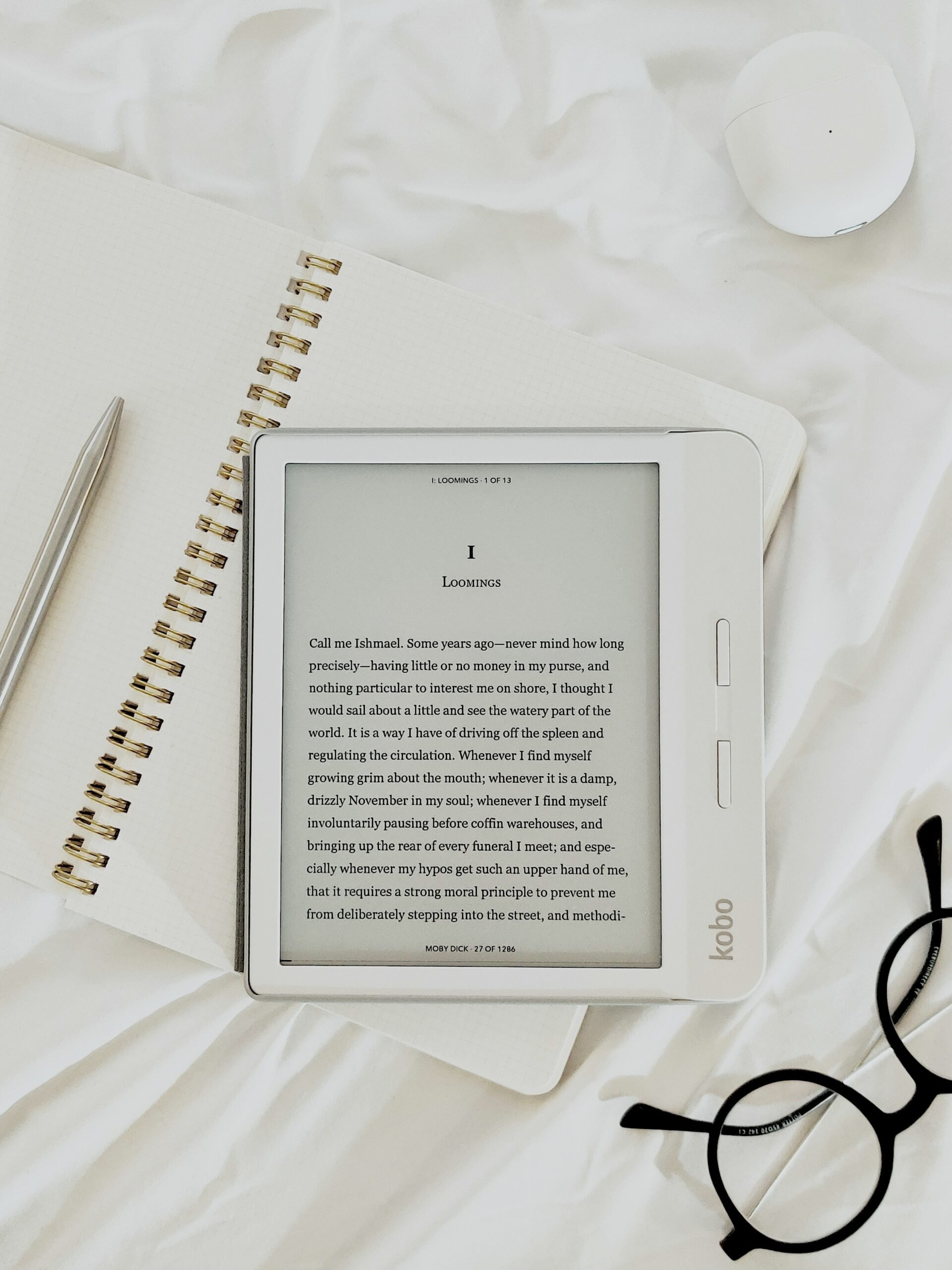An eBook is an electronic or digital version of a printed book. A variety of eBook file formats exist, each with their own strengths and limitations. In this post, we’ll cover the differences between the two most popular formats: PDF and EPUB.
- PDF Format
PDF, or portable document format, is one of the earliest and most widely used electronic formats. Originally created for printing documents, and once the propriety file format of Adobe, PDF files retain their formatting across different devices, making them ideal for preserving the original layout and content of a book. This format ensures that the text, images, fonts, and overall structure of the book remain consistent and true to the author’s vision, regardless of the reader’s screen size or setup.
Texts with complex layouts and content, like academic texts, coffee table books, graphic novels, and technical manuals, where the precise placement of images and words is crucial, do well in PDF format.
PDF files are also highly compatible with a variety of devices, as they are able to be opened and viewed on computers, tablets, and smartphones.
But this static text strength of a PDF file can also be an inconvenience and drawback for certain readers. With a fixed layout, readers cannot adjust font size, style, or background color. Smaller screen devices can have a harder time displaying the whole content, and it can appear awkward without the ability to adapt, requiring zooming and dragging and scrolling. PDFs are not inherently an eBook format.
- EPUB Format
Electronic Publication (EPUB) format is the most common standard for ebooks. Highly versatile, EPUBs can adjust to various screen sizes, making them a perfect fit for reading on e-readers, smartphones, and other devices like tablets.
EPUB files have responsive text and reflowable content, meaning that the content adapts dynamically to fit the screen, eliminating the need for horizontal scrolling or clicking around. Readers can also adjust the font size, style, and spacing according to their preferences and needs. This, combined with features like text-to-speech, means there’s also enhanced accessibility expected with EPUB files.
But like the reverse of a PDF file, this optimization for digital reading means that complex layouts found in image-heavy texts like coffee table books or children’s books may not translate well. And while any device that has an eBook reader can read an EPUB file, that’s not as universally present as PDF compatibility.
| EPUB | ||
| Reflowable, wrappable format | NO | YES |
| Adjustable font and style | NO | YES |
| Retains original design | YES | NO |
| More device compatibility | YES | NO |
So which format is better? Which format does Master Wings Publishing use?
Well, we typically offer both! In the dynamic and large world of eBooks, different file formats cater to different readers and different book styles. Paying attention to the strengths and limitations of each, we fit the file to the request of the reader and the genre of the book.
Check out our ebooks here.
